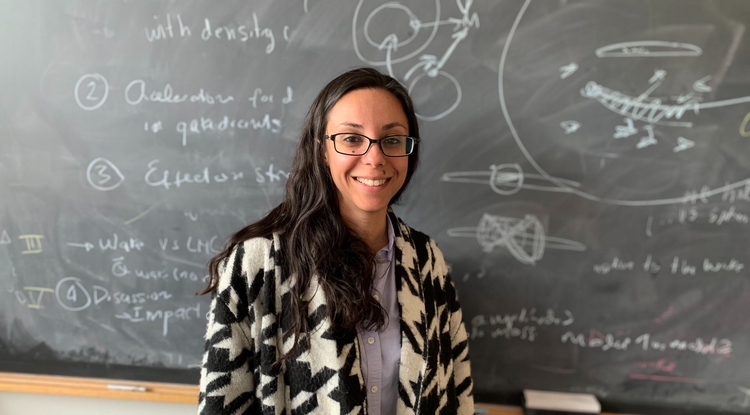By Emily Litvack, Office of Research, Innovation and Impact
University of Arizona UA News
UArizona Assistant Professor of Astronomy Gurtina Besla wants today’s students to have what she didn’t: community, paid internships and clear paths to fulfilling careers—for which they’re actually prepared.

(Feb. 17, 2020) In Gurtina Besla’s universe, astronomy would be inclusive, diverse and accessible, and she is using a new award to make sure it is just that.
Besla, an assistant professor of astronomy at the University of Arizona, has received a five-year, $745,000 CAREER grant from the National Science Foundation for both her novel research on galaxies and dark matter and her outreach efforts to retain, mentor and support students studying STEM disciplines.
The CAREER grant is the agency’s most prestigious honor in support of early-career faculty members who have the potential to serve as academic role models and lead advances in their organization’s mission.
In addition to helping further her research, the CAREER award will help Besla continue to build a program she founded in 2015 called TIMESTEP: the Tucson Initiative for Minority Engagement in Science and Technology Program.
“In both her research and outreach, Besla is truly forward-thinking. The strides she is making toward enabling diversity and equity in the field of astronomy are exemplary, and I am pleased that the National Science Foundation has provided her with this richly deserved recognition,” said Senior Vice President for Research and Innovation Elizabeth “Betsy” Cantwell.
With her CAREER grant, Besla plans to explore two nearby cloudlike galaxies called the Small and Large Magellanic Clouds.
“We’ve always thought that the smaller galaxies orbiting around the Milky Way could never actually affect our galaxy,” she said.
But the Magellanic Clouds are big. Their gravitational pull, therefore, should be big, too. Not only that, but they are traveling at nearly three times the speed of sound.
“The fact that the Magellanic Clouds are this big and this fast and relatively new to our galaxy means they’re messing things up. There’s going to be all kinds of perturbations,” Besla said. One example might be stars around our Milky Way “making weird movements” as a result of the Magellanic Clouds’ presence, she added.
Besla is developing new models to simulate the impact of these galaxies and plans to publicly release them as an open-source program, small enough for undergraduate and graduate students to access on ordinary laptops. The open-source models will even come with tutorials.
It’s all about access, she explained, adding, “Faculty need to think about making their data products available to students across the world.”
In addition to helping further her research, the CAREER award will help Besla continue to build a program she founded in 2015 called TIMESTEP: the Tucson Initiative for Minority Engagement in Science and Technology Program.
“We want to help students graduate and get to the career paths they want and are excited about,” Besla said. “We want to level the playing field so that everyone has the same information and access to opportunity.”
TIMESTEP is a professional development program open to undergraduates in science, technology, engineering and math disciplines and is designed to provide them the information they need to succeed. Its 100 or so students majoring in astronomy, physics, mathematics, optical sciences, engineering and computer science meet twice a month. Half of the students in TIMESTEP are people of color.
To provide inspiration and access to mentorship, Besla invites faculty from across the country to talk to the students about their cultural heritage and how to stay true to their identity in their chosen profession.
“Of course, anyone is welcome to come to TIMESTEP, but we typically invite speakers of color and design programs for minority students. Studies show that they need it more,” Besla said.
The university’s designation as a Hispanic-Serving Institution “is directly relevant to the astronomy department’s goal of building a diverse and inclusive community,” Besla said. “The retention of Hispanic students in our program is a key part of realizing this goal. A large part of that is making sure Hispanic students have access to community.”











